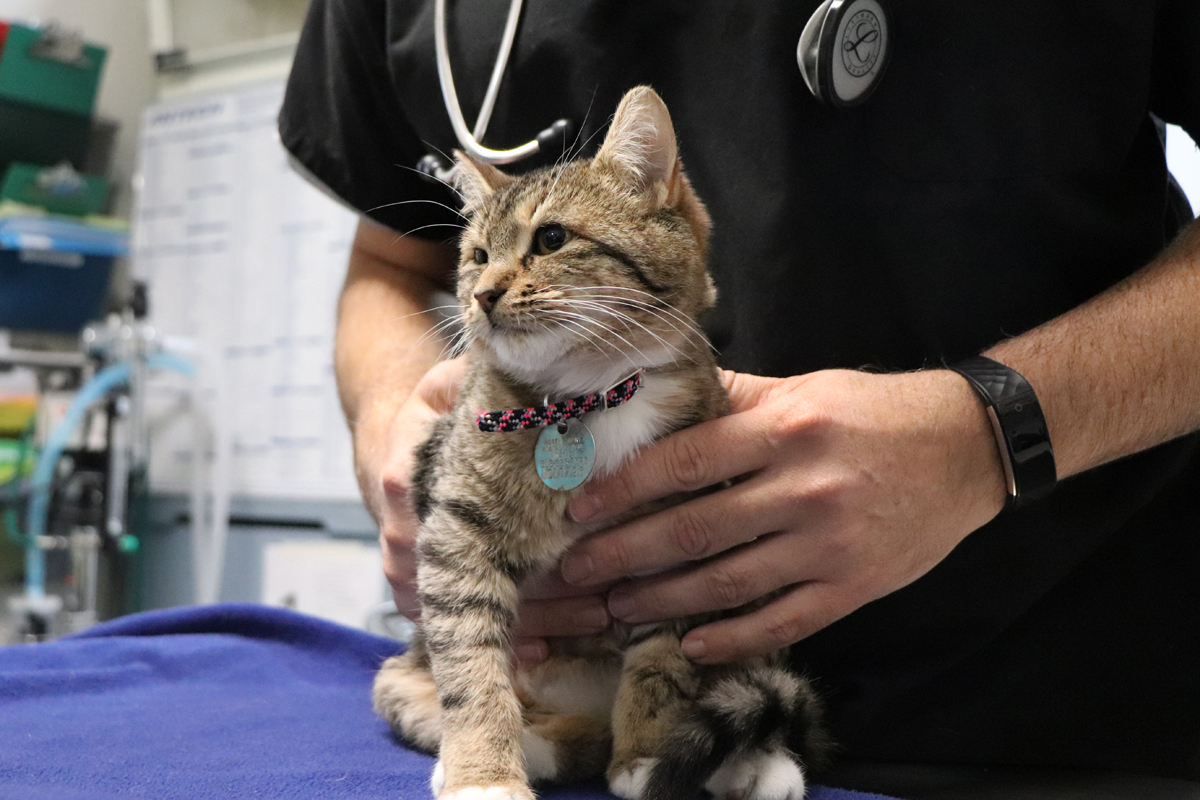It’s so important to protect your pet against fleas and ticks. These pests not only spread bacteria and disease, but can also cause lifelong problems for your pet and family. Our experts at North Shore Animal League America have provided vital information on how to watch out for fleas and ticks and how to protect your pet against them.
Having an itchy, uncomfortable wound from a flea’s bite is not the end to the repercussions. Some cats are allergic to flea saliva, causing a tiny bite to turn into a nasty rash. If you notice crusty bumps on the top of your cat’s head, back or hindquarters, it is very likely that she has been bitten by a flea and is experiencing a type of allergic reaction.

The infection doesn’t just end with your pet. Fleas can carry bacteria in their feces, which can cause Cat Scratch Fever in humans when a human is bitten or scratched by an affected cat. When the cat scratches at a flea bite or attempts to remove the flea by grooming, the bacteria become lodged under their claws or in their mouth. The symptoms of Cat Scratch Disease are usually mild, including swollen lymph nodes around the area of the wound, fever, headache, fatigue, joint pain, and skin rashes. These usually resolve without treatment, but can last for months. More serious complications, including spleen enlargement and heart problems, can cause life-threatening problems, particularly in people with weak immune systems. Most cats that carry the bacteria causing Cat Scratch Fever seem completely healthy. Kittens are much more likely to transmit the disease because they are so playful, and inadvertently pass the bacteria to humans. Overall… protecting your pet is so important!
Fleas thrive in temperatures between 65-80 degrees Fahrenheit and in conditions of high humidity. Fleas live both on your animal and in your environment. Pre-adult fleas live in your home and yard and represent over 90% of the flea population. This immature form is more resistant to treatment than the adult flea.
Some animals may be heavily infested with fleas, but they will show little to no signs of irritation, while a flea-allergic animal may scratch continuously from the bite of a single flea. Many animals will scratch and bite themselves causing irritation of the skin, open sores, and even fur loss.

The best place to look for fleas on your cat or dog is over the back by the tail base, and on the abdomen between the hind legs where there is less fur. Fleas move quickly, so oftentimes the flea cannot actually be spotted on the pet, but rather, evidence of flea infestation known as “flea dirt,” or the stool of the flea, is found. Use of a flea comb will show any “flea dirt” present on your pet.
As a pet owner, ticks should also be a concern.
Ticks, like fleas, are a concern in warmer climates and during the summer months in cooler climates. The bite of a tick is irritating and may cause an allergic reaction. Ticks can carry and transmit diseases such as Lyme disease and Rocky Mountain spotted fever. Ticks are parasites that must attach to an animal or human being in order to survive and mature. They are found outside in areas of low brush and shrubs. Although susceptible to the drying effects of heat and sunlight, ticks can hibernate and survive through winter.
The best way to check for ticks is to brush your pet daily. They can be anywhere on your pet, but are commonly found on the ears and in the ear canals, at the base of the ears and on the feet, and in between the toes. Ticks can be removed from your dog or cat by grasping the head of the tick where it attaches to the skin with tweezers, and gently but firmly pulling back. Use caution when doing this and do not burn the tick or apply irritants to the tick such as rubbing alcohol, as both of these maneuvers can cause further problems for your pet. In most cases, a tick must be attached to your pet for prolonged periods (5-48 hours) to transmit disease. Therefore, a good method of prevention of tick-borne illnesses is to comb through your pet’s coat daily, and remove any ticks, as well as using topical tick preventatives.

Stay informed on flea and tick preventatives and treatment.
Fleas, ticks, and even mosquitoes can bring diseases into your home. The season begins when the temperature rises above freezing. The best time to apply topical flea control is before fleas start laying eggs and biting your pets. There are many brands of topical flea and tick preventatives currently available. Your veterinarian can make a recommendation that is best for your pet.
Remember, cats have very sensitive livers, and may have life-threatening reactions, such as seizures, to over-the-counter or discount flea products. Never give a flea product meant to go on the skin by mouth. Never use a flea product labeled for dogs on a cat, and always check with your veterinarian before giving any flea product to your cat.
Even though the thought of insects and pests may make you cringe, you shouldn’t let the idea of them attacking your pets or your home bug you. An arsenal of awareness, accurate information, and good treatment is all you need to keep those pesky pests where they belong!


